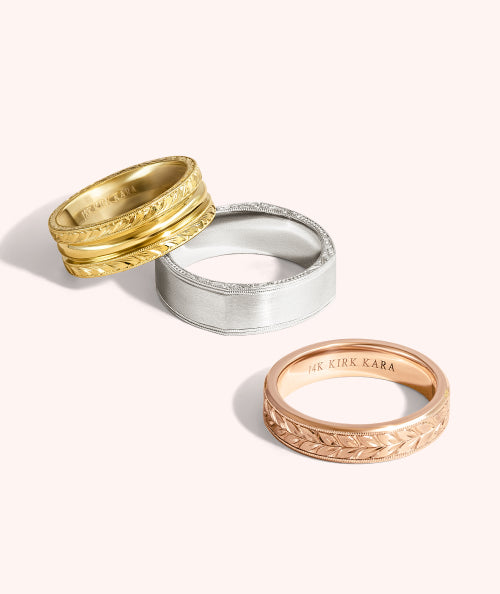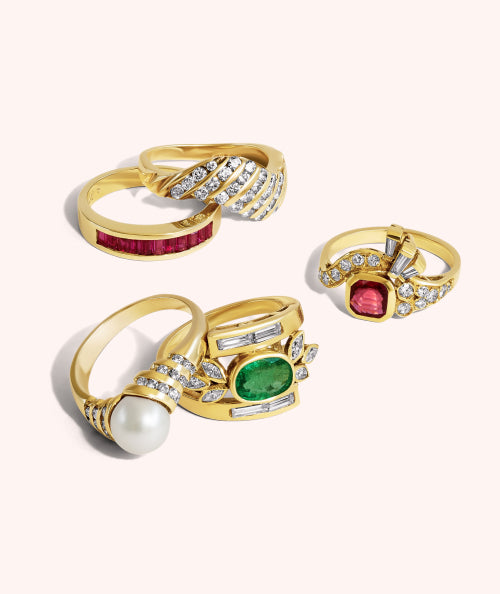Cut

The cut of a diamond determines its brilliance or sparkle. Each shape will be cut differently. Before a diamond is cut, the location of inclusions and flaws, the natural coloration, and the original shape of the rough stone are studied extensively. The stone facets are then mapped out and cut in a way that maximizes size, shape, and clarity. For optimal light performance, you will want a diamond that is cut neither too shallow nor too deep.
Carat

The unit of measure used for the weight of a diamond is the carat. As a matter of reference, a carat is equivalent to .2 grams or .007 of an ounce. Carat weight can also be divided further by using points. There are 100 points in one carat. So a 1/4 (.25) carat stone can also be expressed as 25 points and mean exactly the same thing. When comparing two diamonds, please note that just because one is twice the carat weight of the other does not mean that it will appear to be twice the size.
Color

Diamonds are graded based on the amount of color they do or do not possess. The scale runs from D (colorless) to Z (light yellow). An absolutely colorless diamond is rare and therefore very valuable.
Clarity

A diamond is distinguished by its natural characteristics, just as a person would be noted for her blue eyes or his brown hair. Notated as a diamond's clarity, these characteristics can be present on the surface (blemishes) or within the stone (inclusions). The clarity is judged by the number and types of these characteristics and is designated using a scale that runs from Fl, defined as flawless, to I3, defined as inclusions visible with the naked eye. A flawless diamond is truly rare.
OUR PROMISE TO YOU
Every ring bearing the Kirk Kara name is an original hand crafted design that exceeds the highest standards in our industry.







